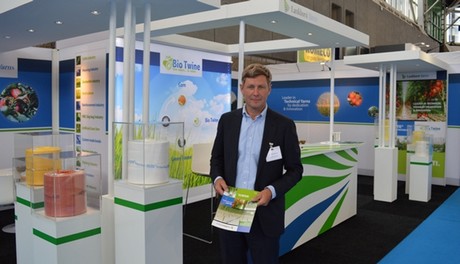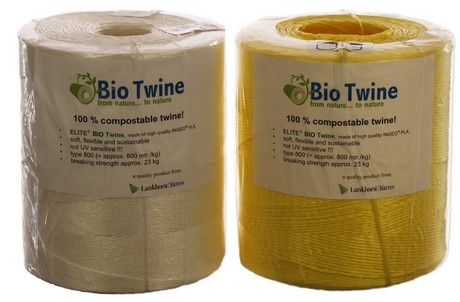
Double role for organic horticulture yarns: plant support and compost
Increasingly more growers are working on making their production process more sustainable. Less emissions, less energy consumption, bees for pollination and natural pest control. Nevertheless, many steps can still be taken towards an even more sustainable cultivation, is the opinion of the producer of compostable horticultural yarns, Lankhorst Yarns. A recent study by Wageningen University and Research (WUR), commissioned by Lankhorst Yarns, shows that after 6 weeks of composting 99% of the yarn has ‘disappeared’.

Joris van Calcar at the GreenTech: “Even though the entire capital of the grower dangles from a piece of string, only the purchase price is taken into account.”
The Elite Bio Twine, made to support plants in the greenhouse, is made from the organic raw material PLA, a plant sugar from the starch of corn plants. Joris van Calcar of Lankhorst Yarns: “The majority of horticultural yarns on the market are made of plastic. So it is logical that people are doubtful about the compostability of our organic yarn.”
Microfibres
The compostability of the yarn has been researched by WUR. Joris: “After a few months and many tests, the researchers came to the conclusion that the compostability of the yarn is good.” After 6 weeks under conditions of 70 degrees Celsius and a humidity of 95 percent, the yarn is no longer apparent between the remaining green waste and has turned into microfibers.
Several growers are currently conducting tests with the yarn that is already being sold successfully in many countries, including to Belgian pepper grower Gemapa. The yarn is still more expensive than plastic string, but Joris is convinced that the good compostability will benefit the growers. “In addition, the costs of processing waste with PLA are also lower than those of waste containing plastic.”

Joris van Calcar: “This report strengthens us in the further development of our Elite Bio Twine, for which we are working on a broader product assortment. We also keep an eye on markets where we are not active yet, because in the end plastic poses a problem for all sectors, and something definitely needs to be done about it.”
